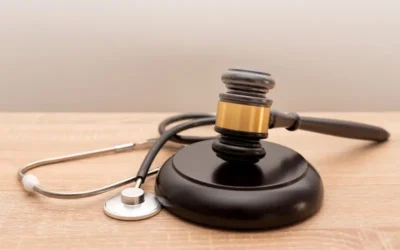Medical records review involves an accurate assessment of a complete set of medical records pertaining to a person for medical or legal purposes. It is a significant process for healthcare providers, and helps evaluate the care given to their patients. Lawyers / litigators handling personal injury, workers’ compensation, social security disability, medical malpractice and product liability cases, insurance claims and fraud investigations also require an accurate review of the plaintiff’s medical records. Plaintiff as well as defense attorneys can use the medical data abstracted from the records to support their clients or defend their clients against various claims.
Here are some important FAQs related to the medical records review process.
- What does a medical record review or medical chart review involve? How is it useful for healthcare providers, attorneys, and health plans?
Medical record review involves gathering and analyzing a person’s medical records such as medical history reports, hospitalization records, lab results, consultation reports, radiology reports, operative reports, emergency room records and so on. For providers such as physicians, surgeons, consultants, nurse practitioners and others, it makes available important prognosis and historical treatment data that is vital to calculate the financial liabilities, and the feasibility of a particular treatment option. The chart review could range from simple organization of medical records to a comprehensive review of key medical events based on the standards of performance, policies and procedures.
- What are the steps involved in the medical record review and analysis process?
- Medical record retrieval from various medical record custodians
- Sorting of the records and medical record organization
- Review of the medical data in the records and interpretation of the same
- Preparation of chronology or patient timeline
- Medical record summary preparation
- Identifying missing medical records
- What is medical record organization? Why is it an essential service?
The medical records are typically voluminous and disorganized. It is not easy for an attorney or his legal staff to review these records. Therefore, medical record organization is a crucial first step in the medical record review process. The digital files created enable the attorney to clearly understand the sequence of medical events and encounters.
- All dates, procedures, treatments, results, and other applicable medical data are accurately captured
- Critical events are clearly highlighted
- Duplicate records are deleted and a log is created of the same
- A list of missing medical records is prepared so that they can also be retrieved
- Bates numbering is done for a permanent record
- Preparation of summaries to facilitate quick review of the complex medical data
- Hyperlinks are inserted in the final reports to enable easy navigation to specific pages. The documents are bookmarked to enable document organization by user-defined categories.
- What documents are produced once the review process is completed?
- Medical chronology
- Medical summary of important clinical events
- Overview of the medical records
- Significant findings with recommendations
- Letter of medical necessity
- Report regarding missing medical records, and gaps in systems
- What is a medical case chronology?
A chronology comprises a list of the patient’s medical history relevant to a particular case. In other words, it is a list of medical events the patient encountered that are arranged in a chronological order. Chronologies are concise, contain unbiased actual facts, and provide insight into the case. Moreover, they are designed for easy reading even for an audience unfamiliar with medical jargon, and are customizable to fit specific case requirements.
- What is medical record summarization? How does it assist attorneys and insurers?
This process involves the creation of an accurate summary of the information contained within the medical records. the process involves the following steps.
- Abstract details such as case-related relevant symptoms and treatments
- An accurate report is created for all identified items such as physical therapy evaluation, radiology report, evaluation/assessment form and so on
- Categorize data under sections such as History, Complaint, Observations, Diagnosis, Prescriptions, and Treatments
- Timelines and charts are created to show treatments from the relevant period(s) of treatment. All information is indexed chronologically.
- Missing medical or billing records are identified and listed.
It helps attorneys understand the medical data within the records more easily and prepare their case well. Medical record summarization is valuable for insurance underwriters also, who need to review the APS (Attending Physician Statement). These physician statements are usually lengthy and contain complex as well as obsolete information. A medical case summary helps by providing a precise account of important medical data such as the patient’s medical history, including diagnostics, medical examinations, prescription medications, lab test findings, vital signs and so on.
- What are bookmarks and hyperlinks in a medical record review report?
Bookmarks in the final document help with easy navigation through the medical records. You can easily find a specific record for a specific date or from a certain location. Hyperlinks are provided to the source document and the summary page for speedy assimilation during the review process.
A professional medical record review report is prepared in keeping with the requirements of the counsel and their litigation strategy. Abstraction of the medical data helps to weed out meritless claims, and also helps with early decision-making support as regards strategy and budget. Medical record review helps to detect tampered medical records, illegible records, and also identify and catalog additional providers of care.
Insurance companies require chart review for medical claims processing. The process helps them validate medical claims submitted by healthcare providers, and determine the medical necessity of services provided to a patient. Also, the review helps to identify expensive procedures that are routinely performed, outdated medical codes, and medical billing and coding inconsistencies such as over billing.




